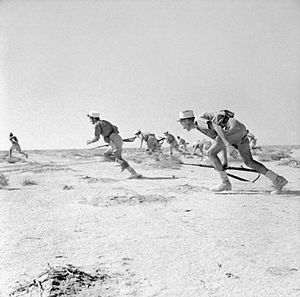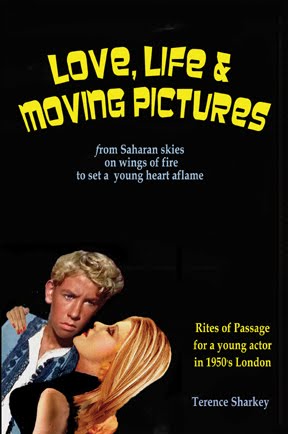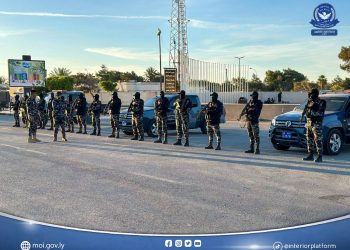By Michel Cousins.

Tripoli, 7 June:
Foreigners using the metro in Paris, travelling on Line 6 from Charles de Gaulle–Étoile station next to . . .[restrict]the Arc de Triomphe to Nation station in the east of the city, pass through a station called Bir Hakim. Over the years, many must have wondered what this obviously Arabic name was doing in the French capital, a stone’s throw from the Eiffel Tower. A commemoration of some colonial victory in Algeria perhaps? Or Lebanon?
It was a French victory, but it had nothing to do with any French colonial undertaking. Bir Hakim is in Libya, near the border with Egypt, although most Libyans have probably never heard of it. Indeed, few people outside France know of it either. But 70 years ago the battle there between 3,700 Free French troops and a German-Italian force almost ten times their size helped determine the course of the Second World War.
In Spring 1942, the situation was looking grim for the Allies. The Germans had reached the Caucasus, the Japanese were in control of the Far-East and in North Africa, Rommel and his Afrika Korps plus his Italian Axis partners, despite some minor military reverses, were pushing the British, along with the Australians, New Zealanders, Indians and South Africans, out of Libya and had their eyes firmly focused on British-controlled Egypt. The Allies were hanging on to Tobruk which they had captured in January the year before, but only just. It seemed only a matter of time before it would fall — as indeed it did on 20 June, 1942.
As part of the British defences, the 1st Free French Division under the command of General Marie-Pierre Koenig had been deployed 80 kilometres south to Bir Hakim — 16 square kilometres of sand and stones around an old Ottoman fort. The aim was to forestall a German attack on Tobruk.
The 44-year-old Koenig had 3,723 troops at his command. They were a mixed bunch. Some were legionnaires like him — two battalions of them. Others were French soldiers and civilians who had escaped to London to join the Free French forces there. There were also Spanish Republicans, Italian anti-Fascists, Moroccan soldiers and a two colonial battalions, one central African, the other from the Pacific Islands.
Koenig dug in, with trenches and minefields all around. On 27 May, Rommel ordered the 15th and 21st Panzer Divisions, and the Italian Trieste and Ariete Armoured Divisions to attack while his main Africa Korps moved towards Tobruk. For nearly two weeks, the French held out despite continued and intensive bombardment. It was the first time in two years that French forces had fought the Germans. But the latter were the larger — the Germans and Italians numbered 32,000 — and better equipped. The inevitable defeat came, at the cost of more than a quarter of the Free French killed, wounded or missing.
But although the French lost the battle it was, like Dunkirk for the British two years earlier, a strategic success for it gave the British and their allies the breathing time to rebuild their forces and counter attack, as they did at El Alamein in November 1942.
As such it became for the French a glorious defeat, marking as it did France’s re-emergence as a military power in the form of the Free French forces led by General De Gaulle.
That is why there is a Paris metro station named after the battle.
To mark the 70th anniversary, there have been a series of ceremonies across France. But perhaps the most poignant were those yesterday, Wednesday, at Bir Hakim itself and Tobruk.

A hundred and fifty dignitaries and guests attended the main ceremony in the morning at the French military cemetery in Tobruk. They included members of Tobruk Local Council, France’s Ambassador Antoine Sivan, General Robert Bresse, president of the France Libre Foundation, other foreign diplomats and a contingent of the French press who had flown in from France. Also present was one of the few surviving men who fought at the battle, 91-year-old Paul Lekerrier. A special message from newly elected French President François Hollande to the France Libre Foundation was read out.

A visit to the actual battle site then followed at midday. Almost nothing remains of the trenches but those who were there yesterday reported that after all these years the detritus of battle is still there — twisted bits of metals, pieces of shrapnel, even the occasional helmet and some deadly mines buried in the ground. There is, too, a monument to the fallen with the double-barred Cross of Lorraine, symbol of the Free French forces.

It was, said French diplomats who attended, a “very moving occasion”. But that was not just because of the strategic significance of the battle all those years ago. According to one of them, the story of Bir Hakim clearly resonated with Libyans who attended the ceremonies and who made the French so welcome at Tobruk.
The valour of the Free French forces at Bir Hakim in 1942 enabled the French to regain something their pride after the humiliation of defeat by the Nazis. That, said the diplomats, appeared to be something that Libyans, whose freedom was so similarly bought, in this case by the valour of Free Libyans forces last year, appeared well able to identify with. [/restrict]











